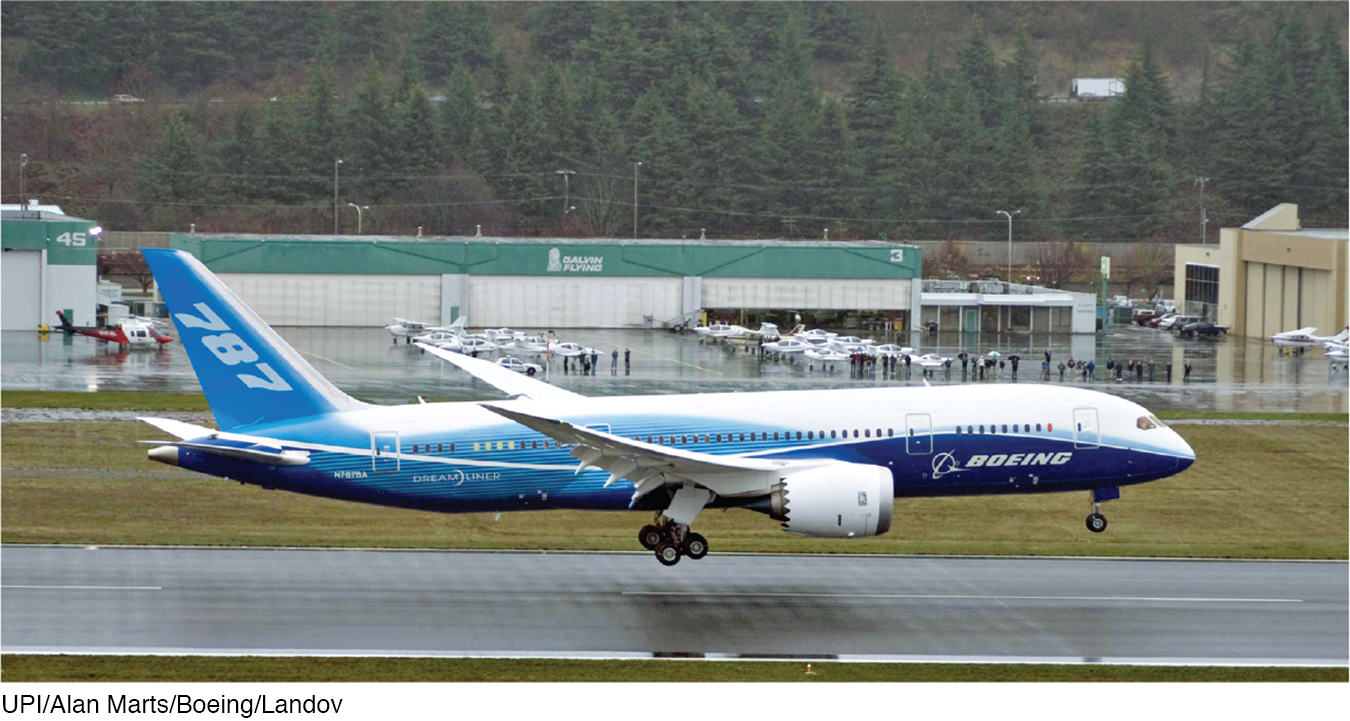Chapter Introduction
Economic Models: Trade-
CHAPTER 2
FROM KITTY HAWK TO DREAMLINER

What You Will Learn in This Chapter
Why models—simplified representations of reality—
play a crucial role in economics Two simple but important models: the production possibility frontier and comparative advantage
The circular-
flow diagram, a schematic representation of the economyThe difference between positive economics, which analyzes how the economy works, and normative economics, which prescribes economic policy
When economists agree and why they sometimes disagree
 | interactive activity
| interactive activity
IN DECEMBER 2009, BOEING’S NEWest jet, the 787 Dreamliner, took its first three-
To ensure that the Dreamliner was sufficiently lightweight and aerodynamic, it underwent over 15,000 hours of wind tunnel tests—
The first flight of the Dreamliner was a spectacular advance from the 1903 maiden voyage of the Wright Flyer, the first successful powered airplane, in Kitty Hawk, North Carolina. Yet the Boeing engineers—
What made the Wrights truly visionary was their invention of the wind tunnel, an apparatus that let them experiment with many different designs for wings and control surfaces. Doing experiments with a miniature airplane, inside a wind tunnel the size of a shipping crate, gave the Wright brothers the knowledge that would make heavier-
Neither a miniature airplane inside a packing crate nor a miniature model of the Dreamliner inside Boeing’s state-
Needless to say, testing an airplane design in a wind tunnel is cheaper and safer than building a full-
In fact, you could say that economic theory consists mainly of a collection of models, a series of simplified representations of economic reality that allow us to understand a variety of economic issues.
In this chapter, we’ll look at two economic models that are crucially important in their own right and also illustrate why such models are so useful. We’ll conclude with a look at how economists actually use models in their work.